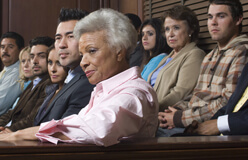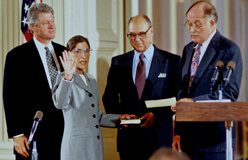In the United States, the court system is where disputes, or disagreements, are settled.
The U.S. has two systems. One is the state system. The other is the federal system. A dispute about a state’s law may be heard by a state court judge. Or a jury. It may also be heard by a justice of the state supreme court. A dispute about the U.S. Constitution or certain other matters is heard by a federal court judge or jury. A few disputes are heard by the highest federal court. That’s the Supreme Court. There are more than 250 state supreme court justices. But there are only nine Supreme Court justices at the federal level. Ruth Bader Ginsburg became one of them.



